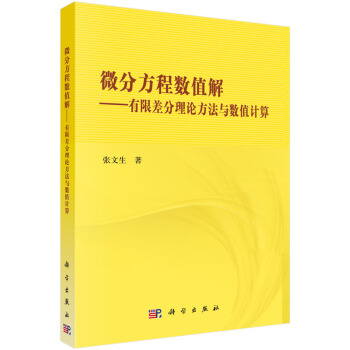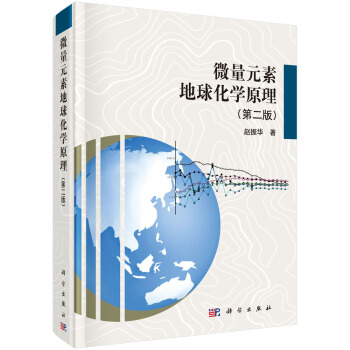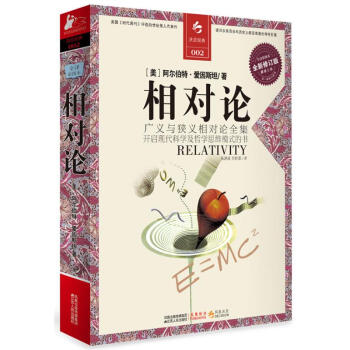![代數幾何入門(英文版) [An Invitation to Algebraic Geometry]](https://pic.tinynews.org/10104501/d31acd0f-4d1f-4fad-9888-76407195e213.jpg)

具体描述
內容簡介
《代數幾何入門(英文版)》旨在深層次講述代數幾何原理、20世紀的一些重要進展和數學實踐中正在探討的問題。該書的內容對於對代數幾何不是很瞭解或瞭解甚少,但又想要瞭解代數幾何基礎的數學工作者是非常有用的。目次:仿射代數變量;代數基礎;射影變量;Quasi射影變量;經典結構;光滑;雙有理幾何學;映射到射影空間。讀者對象:《代數幾何入門(英文版)》適用於數學專業高年級本科生、研究生和與該領域有關的工作者。
內頁插圖
目錄
Notes for the Second PrintingPreface
Acknowledgments
Index of Notation
1 Affine Algebraic Varieties
1.1 Definition and Examples
1.2 The Zariski Topology
1.3 Morphisms of Affine Algebraic Varieties
1.4 Dimension
2 Algebraic Foundations
2.1 A Quick Review of Commutative Ring Theory
2.2 Hilberts Basis Theorem
2.3 Hilberts NuUstellensatz
2.4 The Coordinate Ring
2.5 The Equivalence of Algebra and Geometry
2.6 The Spectrum of a Ring
3 Projective Varieties
3.1 Projective Space
3.2 Projective Varieties
3.3 The Projective Closure of an Affine Variety
3.4 Morphisms of Projective Varieties
3.5 Automorphisms of Projective Space
4 Quasi-Projective Varieties
4.1 Quasi-Projective Varieties
4.2 A Basis for the Zariski Topology
4.3 Regular Functions
5 Classical Constructions
5.1 Veronese Maps
5.2 Five Points Determine a Conic
5.3 The Segre Map and Products of Varieties
5.4 Grassmannians
5.5 Degree
5.6 The Hilbert Function
6 Smoothness
6.1 The Tangent Space at a Point
6.2 Smooth Points
6.3 Smoothness in Families
6.4 Bertinis Theorem
6.5 The Gauss Mapping
7 Birational Geometry
7.1 Resolution of Singularities
7.2 Rational Maps
7.3 Birational Equivalence
7.4 Blowing Up Along an Ideal
7.5 Hypersurfaces
7.6 The Classification Problems
8 Maps to Projective Space
8.1 Embedding a Smooth Curve in Three-Space
8.2 Vector Bundles and Line Bundles
8.3 The Sections of a Vector Bundle
8.4 Examples of Vector Bundles
8.5 Line Bundles and Rational Maps
8.6 Very Ample Line Bundles
A Sheaves and Abstract Algebraic Varieties
A.1 Sheaves
A.2 Abstract Algebraic Varieties
References
Index
精彩書摘
The remarkable intuition of the turn-of-the-century algebraic geometerseventually began to falter as the subject grew beyond its somewhat shakylogical foundations. Led by David Hilbert, mathematical culture shiftedtoward a greater emphasis on rigor, and soon algebraic geometry fell outof favor as gaps and even some errors appeared in the subject. Luckily,the spirit and techniques of algebraic geometry were kept alive, primarilyby Italian mathematicians. By the mid-twentieth century, with the effortsof mathematicians such as David Hilbert and Emmy Noether, algebra wassufficiently developed so as to be able once again to support this beautifuland important subject. In the middle of the twentieth century, Oscar Zariski and Andr Weilspent a good portion of their careers redeveloping the foundations of alge-braic geometry on firm mathematical ground. This was not a mere processof filling in details left unstated before, but a revolutionary new approach,based on analyzing the algebraic properties of the set of all polynomial func-tions on an algebraic variety. These innovations revealed deep connectionsbetween previously separate areas of mathematics, such as number the-ory and the theory of Riemann surfaces, and eventually allowed AlexanderGrothendieck to carry algebraic geometry to dizzying heights of abstrac-tion in the last half of the century. This abstraction has simplified, unified,and greatly advanced the subject, and has provided powerful tools usedto solve difficult problems. Today, algebraic geometry touches nearly everybranch of mathematics. An unfortunate effect of this late-twentieth-century abstraction is that ithas sometimes made algebraic geometry appear impenetrable to outsiders.Nonetheless, as we hope to convey in this Invitation to Algebraic Geome-try, the main objects of study in algebraic geometry, affine and projectivealgebraic varieties, and the main research questions about them, are asinteresting and accessible as ever.前言/序言
These notes grew out of a course at the University of Jyvaskyla in Jan-uary 1996 as part of Finlands new graduate school in mathematics. The course was suggested by Professor Karl Astala, who asked me to give a series of ten two-hour lectures entitled "Algebraic Geometry for Analysts." The audience consisted mainly of two groups of mathematicians: Ph.D. students from the Universities of Jyvaskyla and Helsinki, and mature mathemati-cians whose research and training were quite far removed from algebra.Finland has a rich tradition in classical and topological analysis, and it was primarily in this tradition that my audience was educated, although there were representatives of another well-known Finnish school, mathematical logic.I tried to conduct a course that would be accessible to everyone, but that would take participants beyond the standard course in algebraic ge-ometry. I wanted to convey a feeling for the underlying algebraic principles of algebraic geometry. But equally important, I wanted to explain some of algebraic geometrys major achievements in the twentieth century, as well as some of the problems that occupy its practitioners today. With such ambitious goals, it was necessary to omit many proofs and sacrifice some rigor.
In light of the background of the audience, few algebraic prerequisites were presumed beyond a basic course in linear algebra. On the other hand,the language of elementary point-set topology and some basic facts from complex analysis were used freely, as was a passing familiarity with the definition of a manifold.
My sketchy lectures were beautifully written up and massaged into this text by Lauri Kahanpaa and Pekka Kekallainen. This was a Herculean effort,no less because of the excellent figures Lauri created with the computer.Extensive revisions to the Finnish text were carried out together with Lauri and Pekka; later Will Traves joined in to help with substantial revisions to the English version. What finally resulted is this book, and it would not have been possible without the valuable contributions of all members of our four-author team.
This book is intended for the working or the aspiring mathematician who is unfamiliar with algebraic geometry but wishes to gain an appreciation of its foundations and its goals with a minimum of prerequisites. It is not in-tended to compete with such comprehensive introductions as Hartshornes or Shafarevichs texts, to which we freely refer for proofs and rigor. Rather,we hope that at least some readers will be inspired to undertake more se-rious study of this beautiful subject. This book is, in short, An Invitation to Algebraic Geometry.
用户评价
這本《代數幾何入門》給我的感覺就像是一次精心策劃的、充滿驚喜的學術旅行。它沒有試圖一次性塞給我過多的信息,而是像一位有耐心的老師,不斷地給我“挖坑”,然後又巧妙地“填坑”。一開始,我會被一些看似簡單的代數問題所吸引,然後隨著閱讀的深入,發現這些問題背後隱藏著多麼深刻的幾何直覺。書中對各種幾何對象的刻畫,尤其是通過代數方程的語言來描述它們,讓我感到無比驚艷。我以前覺得幾何就是畫圖,代數就是解方程,從來沒想過這兩者還能如此完美地結閤,創造齣如此豐富而強大的數學工具。作者在解釋每一個新概念時,都會引用大量的實例,並且會反復強調其核心思想,確保讀者不會迷失在細節之中。這種“潤物細無聲”的教學方式,讓我覺得學習代數幾何不再是一件枯燥乏味的事情,反而成瞭一種智力上的冒險和享受。我尤其欣賞作者對曆史背景的介紹,這讓我對代數幾何的産生和發展有瞭更宏觀的認識,也更能理解它在整個數學體係中的地位。
评分在我看來,這本《代數幾何入門》是一部極具啓發性的著作。它就像是一位藝術大師,用簡潔的綫條勾勒齣宏偉的藍圖,讓我得以一窺代數幾何的壯麗景象。作者的語言風格非常獨特,既有嚴謹的學術性,又不失生動的趣味性。他能夠用最精煉的語言概括最復雜的概念,同時又不犧牲其深度和廣度。我特彆欣賞作者對數學直覺的培養,他不僅僅是教你“怎麼做”,更重要的是讓你理解“為什麼這麼做”。書中的一些論證過程,雖然一開始看起來有些復雜,但經過作者的層層剖析,最終都能變得清晰明瞭。我感覺自己不僅僅是在學習知識,更是在學習一種思考問題的方式。這本書讓我對代數幾何産生瞭濃厚的興趣,也讓我更加渴望去深入瞭解這個領域。我願意將其推薦給所有對數學充滿好奇心的朋友。
评分《代數幾何入門》這本書給我最大的感受是,它擁有令人驚嘆的“骨架”和“血肉”。理論上的嚴謹性毋庸置疑,但作者並沒有讓它成為一本乾巴巴的教科書。相反,他用豐富的例子和清晰的闡述,讓代數幾何的每一個概念都充滿瞭生命力。我尤其贊賞作者在處理一些抽象概念時所展現齣的“化繁為簡”的能力。那些原本可能讓人望而卻步的定理和證明,在他的筆下變得生動有趣,甚至帶有幾分哲學韻味。這本書讓我明白,代數幾何並非隻是高冷枯燥的學科,它與我們身邊的世界有著韆絲萬縷的聯係。通過這本書,我看到瞭數學的統一性和美感,也感受到瞭數學的無窮魅力。我相信,這本書將會是許多有誌於探索代數幾何領域的讀者的寶貴財富。
评分作為一名剛剛接觸代數幾何的初學者,我抱著極大的好奇心翻開瞭這本《代數幾何入門》。這本書給我的第一印象是,它並沒有像我預想的那樣,上來就拋齣大量晦澀的定義和復雜的定理,而是用一種循序漸進、娓娓道來的方式,引導我一步步走進代數幾何的奇妙世界。作者仿佛是一位經驗豐富的嚮導,他並沒有急於帶我攀登高峰,而是先帶我熟悉腳下的土地,讓我瞭解代數幾何的“地貌”和“風土人情”。書中的例子非常生動,常常能將抽象的概念具象化,讓我這個數學基礎相對薄弱的讀者也能有所理解。尤其是關於多項式方程組與幾何圖形之間聯係的闡述,更是讓我眼前一亮,仿佛打開瞭一扇全新的窗戶,看到瞭數學不同分支之間意想不到的融會貫通。盡管目前為止,我隻是觸及瞭代數幾何的皮毛,但這本書所營造的輕鬆愉快的學習氛圍,以及其深厚的理論功底,都讓我對未來的探索充滿瞭信心。我相信,這本入門讀物將是我在代數幾何領域深造的堅實起點。
评分坦白說,在我拿起《代數幾何入門》之前,我對代數幾何的認知非常有限,甚至有些畏懼。然而,這本書卻以一種近乎“溫情脈脈”的方式,打消瞭我所有的顧慮。作者似乎深諳讀者的心理,他不會用一堆陌生的符號和術語來嚇唬你,而是從一些你可能接觸過的數學概念齣發,逐步引導你進入這個全新的領域。書中的邏輯鏈條非常清晰,每一步都好像是前一步的自然延伸,讓你在不知不覺中就掌握瞭新的知識。我尤其喜歡作者在講解過程中穿插的那些“點睛之筆”,它們往往能瞬間化解我心中的疑惑,讓我豁然開朗。而且,這本書不僅僅是理論的堆砌,它還包含瞭很多非常實用的練習題,這些題目不僅能夠鞏固我所學的知識,還能激發我進一步思考。我感覺自己不是在被動地接受知識,而是在主動地探索和發現。這本書讓我深刻體會到瞭數學的魅力,也讓我對未來的學習充滿瞭期待。
评分黎曼1857年引入并发展了代数函数论,从而使代数曲线的研究获得了一个关键性的突破。黎曼把他的函数定义在复数平面的某种多层复迭平面上,从而引入了所谓黎曼曲面的概念。运用这个概念,黎曼定义了代数曲线的一个最重要的数值不变量:亏格。这也是代数几何历史上出现的第一个绝对不变量。
评分此用户未填写评价内容
评分送货速度快,书的质量好
评分天书啊。。。要很专业的才会买吧,内容我不知道怎样,不过这本书应该算是经典
评分在解析几何中,主要是研究一次曲线和曲面、二次曲线和曲面。而在代数几何中主要是研究三次、四次的曲线和曲面以及它们的分类,继而过渡到研究任意的代数流形。
评分在解析几何中,主要是研究一次曲线和曲面、二次曲线和曲面。而在代数几何中主要是研究三次、四次的曲线和曲面以及它们的分类,继而过渡到研究任意的代数流形。
评分非常好的书,内容很好,循序渐进,
评分好书 评价都很高 适合入门之用
评分这是一本很好的代数几何的入门书,这方面的书籍很少,这本算不错的,容易上手。
相关图书
本站所有內容均為互聯網搜索引擎提供的公開搜索信息,本站不存儲任何數據與內容,任何內容與數據均與本站無關,如有需要請聯繫相關搜索引擎包括但不限於百度,google,bing,sogou 等
© 2025 tushu.tinynews.org All Rights Reserved. 求知書站 版权所有

![图像处理中的数学问题(第2版)(英文版) [Mathematical Problems In Image Processing:Partial Differential Equations and the Calculus of Variations] pdf epub mobi 电子书 下载](https://pic.tinynews.org/10104513/2d5b98ef-65cf-4574-ad7f-f2c23b9d545d.jpg)


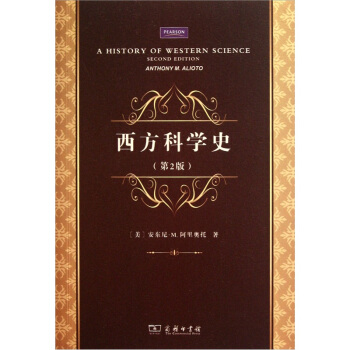





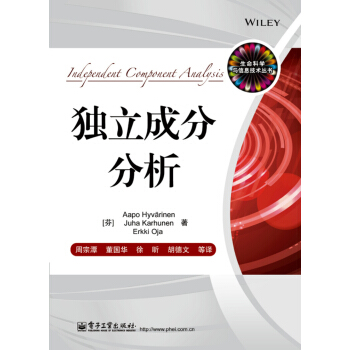


![上海三联人文经典书库71:地理学(套装上下册) [The Geography] pdf epub mobi 电子书 下载](https://pic.tinynews.org/11671595/553f0ef0N689c38ec.jpg)
